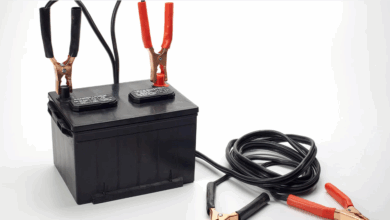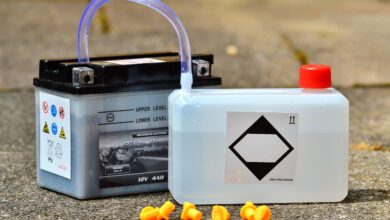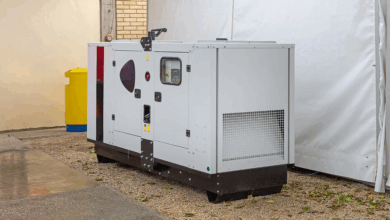Safely Using Your Small Generator: Essential Tips
Power Up Safely: Essential Tips for Using Your Small Generator
Small generators are incredibly useful tools. They can provide essential backup power during outages, run tools on remote job sites, or bring comfort to camping trips and outdoor events. Their portability and convenience make them popular. However, the power they provide comes with significant responsibility. Mishandling a generator can lead to serious accidents, including carbon monoxide poisoning, electric shock, and fires.
Using your small generator safely is not just a recommendation – it’s absolutely critical. Understanding the potential hazards and following essential safety guidelines can mean the difference between a helpful tool and a dangerous situation. This article will walk you through the must-know safety tips to ensure you and those around you remain safe while operating your small generator.
The Silent Killer: Carbon Monoxide Prevention
This is, without question, the most important safety message regarding generators. Generators produce carbon monoxide (CO), an odorless, colorless gas that can kill quickly and without warning. CO poisoning is the leading cause of generator-related deaths.
- ALWAYS Use Outdoors: Never, ever use a generator indoors. This includes garages, basements, sheds, or any enclosed or partially enclosed space, even if doors or windows are open. Exhaust fumes can rapidly build up to lethal levels.
- Maintain Distance: Place the generator at least 20 feet away from your home or any building. Ensure the exhaust is directed away from windows, doors, and vents that could allow fumes to enter occupied spaces. Wind direction can change, so consider this when positioning.
- Install CO Alarms: Install battery-operated or battery-backup carbon monoxide alarms in your home, especially near sleeping areas. Test them regularly to ensure they are working. Know the symptoms of CO poisoning (headache, dizziness, nausea, fatigue, confusion) and if you suspect it, get to fresh air immediately and seek medical attention.
Shockingly Safe: Electrical Precautions
Electricity and water don’t mix, and exposed wiring or improper connections can lead to severe electric shock or electrocution.
- Keep it Dry: Never operate a generator in wet conditions, such as rain or snow, unless it is specifically designed for such use and you are taking extreme precautions like operating it under a canopy or in a protected area that still allows for ample ventilation. Keep your hands dry when touching the generator or connecting cords.
- Use Appropriate Cords: Use only heavy-duty, outdoor-rated extension cords that are specifically designed for generator use and have sufficient gauge wire to handle the load you are connecting. Ensure the cords are in good condition – inspect them for cuts, fraying, or damage before each use.
- Avoid Overloading: Do not exceed the generator’s wattage capacity. Overloading can damage the generator and connected appliances, and potentially cause electrical hazards. Start larger appliances first, then add smaller ones.
- Ground the Generator: Follow the manufacturer’s instructions for grounding your generator. This typically involves connecting the generator’s frame to a grounding rod driven into the earth using a copper wire. Proper grounding helps prevent electric shock if there is a fault.
Fueling Caution: Preventing Fire Hazards
Generators run on fuel, which is inherently flammable. Improper fueling and handling can lead to dangerous fires.
- Fuel When Cool: Always turn off the generator and let it cool down completely before refueling. Gasoline or other fuels spilled on a hot engine can ignite instantly.
- Refuel Outdoors: Always refuel outdoors in a well-ventilated area.
- Proper Fuel Storage: Store fuel in approved, clean, and properly labeled containers. Keep fuel stored away from living areas, generators, furnaces, water heaters, and any other ignition sources. Follow local regulations for fuel storage.
- No Smoking: Never smoke near a generator or fuel containers.
- Check for Leaks: Before starting, visually inspect the generator for any signs of fuel leaks. Address any leaks immediately.
- Keep Flammables Away: Ensure the area around the generator is clear of grass, leaves, rags, or any other flammable materials.
Location, Location, Safe Operation
Where and how you set up your generator matters greatly for safety and performance.
- Stable Surface: Place the generator on a stable, level surface to prevent it from tipping over during operation.
- Clearances: Ensure there is adequate space around the generator for proper airflow. Refer to your owner’s manual for specific clearance requirements, but typically 3-4 feet of clear space on all sides is recommended. This prevents overheating and allows for safe access.
- Security: Secure the generator to prevent theft, but also to keep children and pets from getting too close while it’s running or hot.
Connecting to Power: Avoiding Backfeeding
One of the most dangerous mistakes is "backfeeding" – plugging the generator directly into a home’s wall outlet using a standard extension cord.
- NEVER Backfeed: Backfeeding bypasses the home’s main circuit breaker. This sends power out onto the utility lines, which can seriously injure or kill utility workers attempting to restore power. It can also damage your home’s wiring and the generator.
- Use a Transfer Switch or Interlock Kit: If you plan to power circuits in your home (like lights, furnace, or refrigerator) through your home’s wiring, you must have a qualified electrician install a manual transfer switch or a generator interlock kit. This safely isolates your home’s electrical system from the utility grid during generator use.
- Direct Connection for Appliances: For powering individual appliances, plug them directly into the outlets provided on the generator using appropriate extension cords.
Ready When You Need It: Pre-Use Checks
A quick check before starting your generator can prevent issues and ensure safe operation.
- Read the Manual: This is the most important step! Every generator is slightly different. Read your owner’s manual thoroughly and follow all safety warnings and operating instructions.
- Check Fuel and Oil: Ensure the fuel tank is full (remember to refuel when cool!) and check the oil level according to the manual’s instructions.
- Inspect for Damage: Quickly look over the generator and cords for any visible damage, loose parts, or leaks.
- Clear Exhaust Path: Double-check that the exhaust is clear and directed away from any buildings or people.
General Handling and Maintenance
- Shutting Down: Follow the proper shutdown procedure outlined in your manual. Typically, this involves disconnecting the load first, then turning off the engine.
- Cool Down: Allow the generator to cool down completely before moving or storing it. The engine and muffler can remain hot for a significant time after shutting off.
- Regular Maintenance: Perform routine maintenance (oil changes, air filter cleaning/replacement, spark plug checks) as recommended in the owner’s manual. A well-maintained generator runs more efficiently and safely.
FAQs: Common Questions About Generator Safety
Q: Can I use my generator in the garage if I leave the door open?
A: Absolutely NOT. Even with the garage door open, CO can quickly accumulate to dangerous levels. Always operate generators outdoors and far away from buildings.
Q: How far away from my house should I place the generator?
A: At least 20 feet away, with the exhaust directed away from the house, windows, doors, and vents. More distance is better if possible.
Q: What kind of extension cords should I use?
A: Use only heavy-duty, outdoor-rated extension cords that are rated for the wattage you need and are in good condition.
Q: Can I plug my generator into a wall outlet to power my house?
A: NEVER. This is called backfeeding and is extremely dangerous. It can electrocute utility workers and damage electrical systems. Use a transfer switch or interlock kit if you need to power hardwired circuits in your home.
Q: Do I need a carbon monoxide detector if I use my generator outdoors?
A: Yes. While the generator is outdoors, CO fumes can still drift into your home through open windows, doors, or vents. CO alarms provide a critical backup warning.
Q: How should I store gasoline for my generator?
A: Store fuel in approved, clean, and properly labeled containers, away from living areas, appliances, and any ignition sources. Follow local storage regulations.
Q: What should I do if I smell gas while the generator is running?
A: Turn off the generator immediately, let it cool down, and inspect for leaks. Do not restart until the leak is found and repaired.
Q: What are the signs of carbon monoxide poisoning?
A: Headache, dizziness, nausea, fatigue, confusion, shortness of breath. If you experience these symptoms while a generator is running nearby, get to fresh air immediately and call 911.
Conclusion
Small generators are invaluable during times of need, but they demand respect for their potential hazards. Carbon monoxide poisoning, electrical shock, and fires are real and present dangers that can be easily avoided by following basic safety guidelines.
Prioritize safety by always operating your generator outdoors, far from buildings, using appropriate electrical connections, handling fuel with extreme caution, and performing regular maintenance. Invest in carbon monoxide alarms for your home. Most importantly, read and understand the owner’s manual specific to your generator model.
By taking these essential precautions, you can harness the convenience of your small generator safely and effectively, ensuring it remains a helpful tool rather than a source of danger. Stay informed, stay prepared, and stay safe.




![How to Bypass CO Sensor on Generator – [4-Step Safety Guide]](https://www.generator411.com/wp-content/uploads/2025/08/co-sensor-on-generator-390x220.png)